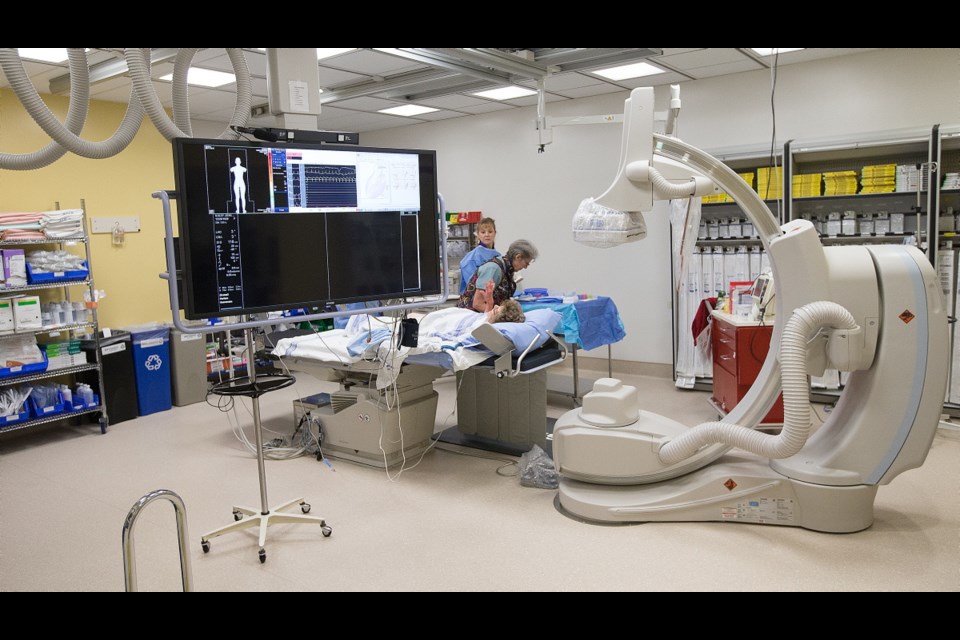Carolyn Thomas knew she was in trouble. The Oak Bay resident’s chest hurt, her left arm ached, she was sweaty, feeling queasy and out of breath.
It was May 2008 and Thomas had flown to Ottawa for her mother’s 80th birthday. There was just no way she was going to spoil that party. So she said nothing.
By the time she had flown back to Victoria she couldn’t walk five steps without stopping. She went to emergency at the Royal Jubilee Hospital. After she was examined, she asked a very empathetic cardiologist if she was going to have a heart attack.
“He said: ‘You already are having a heart attack,’ ” said Thomas.
She was at Royal Jubilee Hospital on Friday recalling her brush with death to help the Victoria Hospital Foundation raise $3.2 million. The money will be used to buy 34 pieces of equipment for Island Health’s Department of Heart Health.
The 67-year-old Thomas is a fitting ambassador for the new campaign, called In a Heartbeat: Everyday Miracles.
The heart health unit saved her life with the insertion of a stent, a device to keep clear a blocked artery. During her stay Thomas received help from nurses and doctors using equipment the Hospital Foundation is looking to upgrade.
Island Health’s heart health unit, working out of the Royal Jubilee and Victoria General hospitals, assists 200,000 patients each year. Its 300 health-care workers and 20 doctors perform 6,300 procedures annually. These include open-heart surgeries, angiograms, angioplasties, electrophysiology and insertions of cardiac devices.
Those procedures and examinations use equipment that wears out and becomes outmoded. Ten years is the usual lifespan of medical equipment.
“In order to provide the best care possible we need to steadily upgrade our equipment,” said Dr. Manjeet Mann, Island Health medical director of heart health.
Top of the wish list for medical equipment that must be replaced is $1.75 million for a new heart catheterization laboratory C-arm. It was installed two weeks ago and now must be paid for.
The C-arm allows doctors to diagnose blocked arteries by providing real-time X-ray images on video screens. It also allows doctors to insert catheters, thin tubes, directly into the heart. These catheters carry medicine, diagnostic tools and life-saving devices, such as Thomas’s stent.
“It’s absolutely crucial,” said Island Health cardiologist Dr. Anthony Della Siega. “If we don’t have that piece of equipment [the C-arm], we don’t do procedures.”
Also, the new one is better for patients because it requires less exposure to radiation and less foreign material is injected into the heart, like diagnostic dyes, to identify problems.
Della Siega said he joined Island Health, coming from Toronto, because its heart health unit is recognized as one of the most forward thinking in North America in terms of research, health care, procedures and outcomes.
About 30 years ago it pioneered the insertion of catheters to the heart through blood vessels in the arm. Previously, despite the extra length, surgeons used vessels in the leg because they were bigger.
The heart health unit is now pioneering a procedure to repair damaged hearts using stem cells. Only two other hospitals in North America are doing similar research, both in the U.S.
“This is cutting edge stuff and, in Canada, it’s only happening here,” said Della Siega.
“These types of procedures can save lives and we do them here in the utmost confidence that we have the support of the community.”



